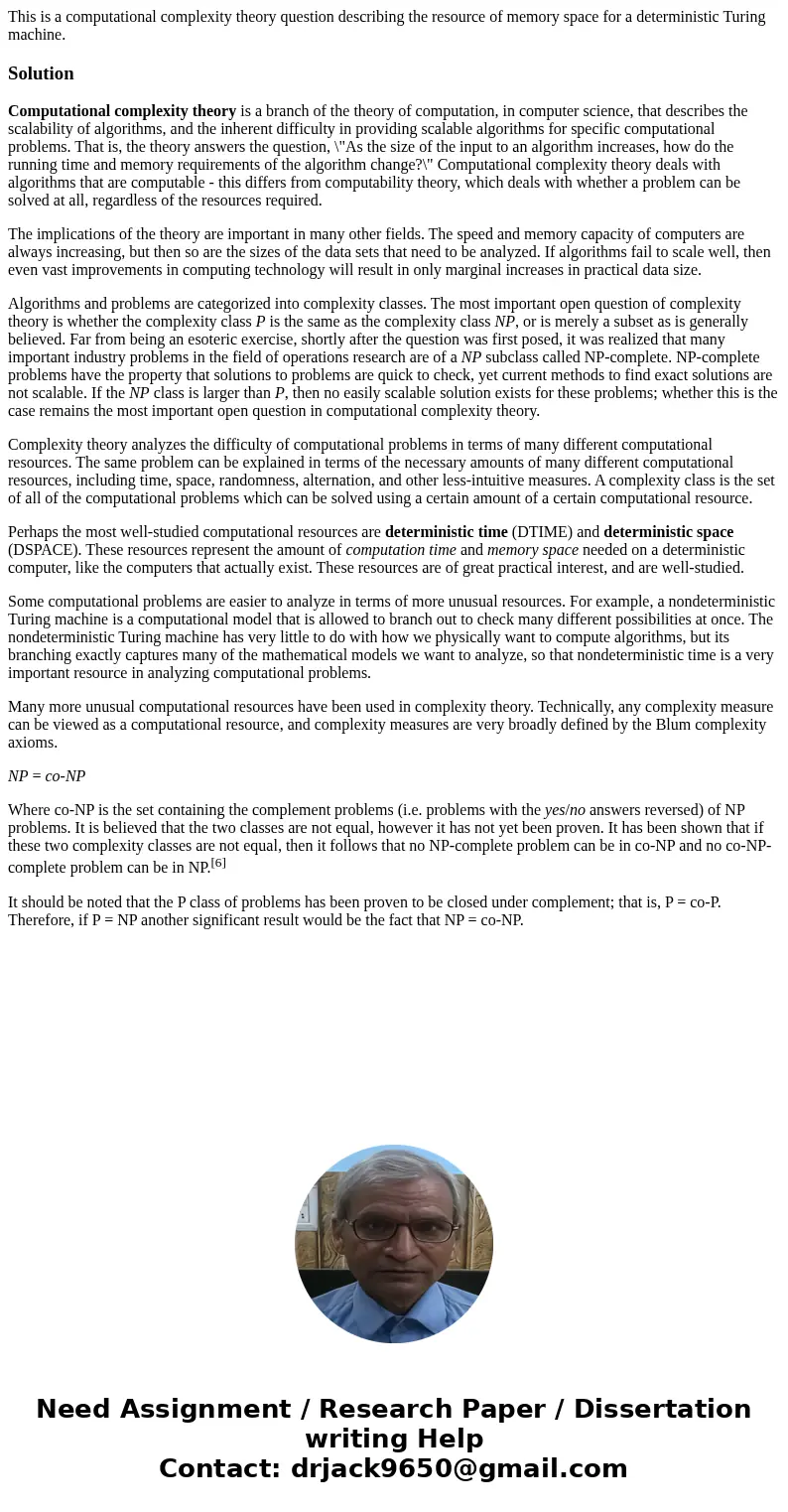This is a computational complexity theory question describin
This is a computational complexity theory question describing the resource of memory space for a deterministic Turing machine.
Solution
Computational complexity theory is a branch of the theory of computation, in computer science, that describes the scalability of algorithms, and the inherent difficulty in providing scalable algorithms for specific computational problems. That is, the theory answers the question, \"As the size of the input to an algorithm increases, how do the running time and memory requirements of the algorithm change?\" Computational complexity theory deals with algorithms that are computable - this differs from computability theory, which deals with whether a problem can be solved at all, regardless of the resources required.
The implications of the theory are important in many other fields. The speed and memory capacity of computers are always increasing, but then so are the sizes of the data sets that need to be analyzed. If algorithms fail to scale well, then even vast improvements in computing technology will result in only marginal increases in practical data size.
Algorithms and problems are categorized into complexity classes. The most important open question of complexity theory is whether the complexity class P is the same as the complexity class NP, or is merely a subset as is generally believed. Far from being an esoteric exercise, shortly after the question was first posed, it was realized that many important industry problems in the field of operations research are of a NP subclass called NP-complete. NP-complete problems have the property that solutions to problems are quick to check, yet current methods to find exact solutions are not scalable. If the NP class is larger than P, then no easily scalable solution exists for these problems; whether this is the case remains the most important open question in computational complexity theory.
Complexity theory analyzes the difficulty of computational problems in terms of many different computational resources. The same problem can be explained in terms of the necessary amounts of many different computational resources, including time, space, randomness, alternation, and other less-intuitive measures. A complexity class is the set of all of the computational problems which can be solved using a certain amount of a certain computational resource.
Perhaps the most well-studied computational resources are deterministic time (DTIME) and deterministic space (DSPACE). These resources represent the amount of computation time and memory space needed on a deterministic computer, like the computers that actually exist. These resources are of great practical interest, and are well-studied.
Some computational problems are easier to analyze in terms of more unusual resources. For example, a nondeterministic Turing machine is a computational model that is allowed to branch out to check many different possibilities at once. The nondeterministic Turing machine has very little to do with how we physically want to compute algorithms, but its branching exactly captures many of the mathematical models we want to analyze, so that nondeterministic time is a very important resource in analyzing computational problems.
Many more unusual computational resources have been used in complexity theory. Technically, any complexity measure can be viewed as a computational resource, and complexity measures are very broadly defined by the Blum complexity axioms.
NP = co-NP
Where co-NP is the set containing the complement problems (i.e. problems with the yes/no answers reversed) of NP problems. It is believed that the two classes are not equal, however it has not yet been proven. It has been shown that if these two complexity classes are not equal, then it follows that no NP-complete problem can be in co-NP and no co-NP-complete problem can be in NP.[6]
It should be noted that the P class of problems has been proven to be closed under complement; that is, P = co-P. Therefore, if P = NP another significant result would be the fact that NP = co-NP.

 Homework Sourse
Homework Sourse